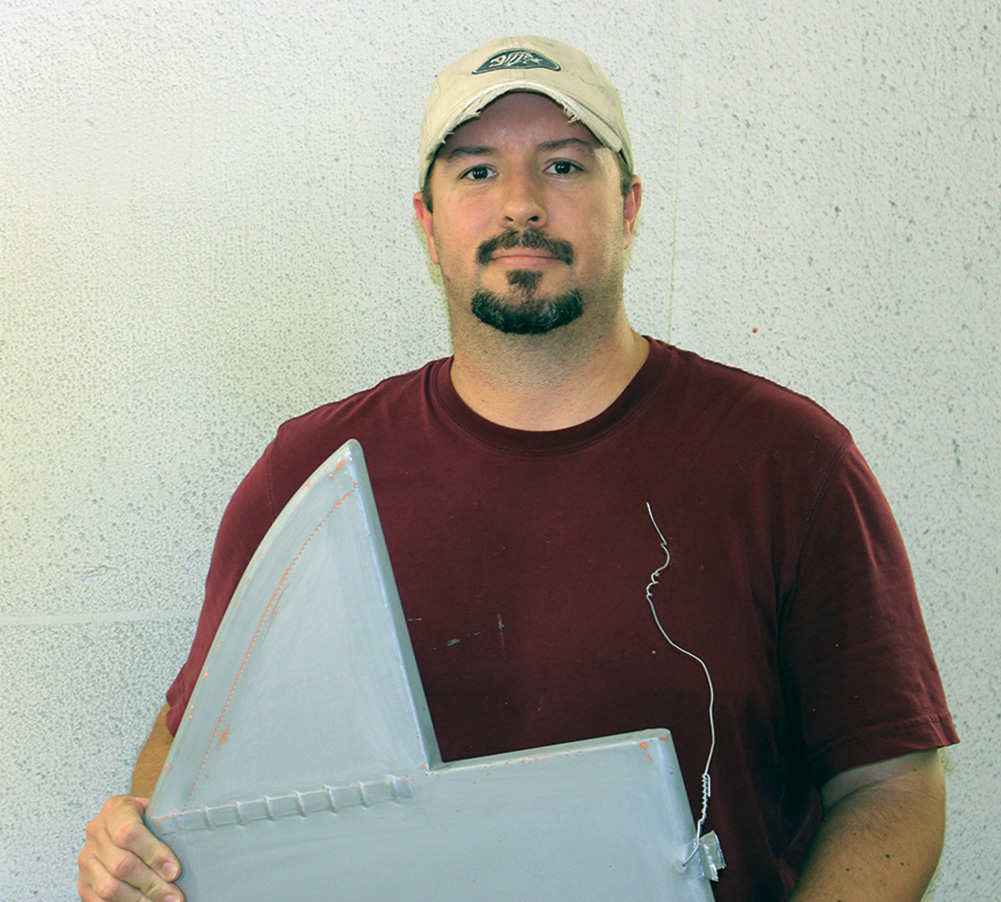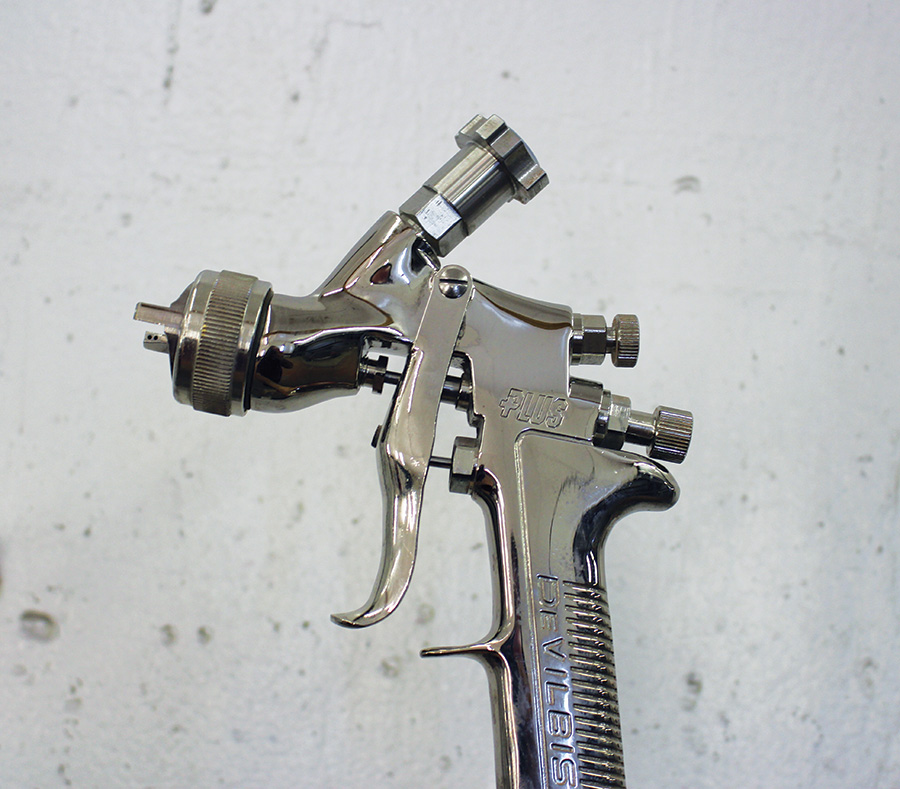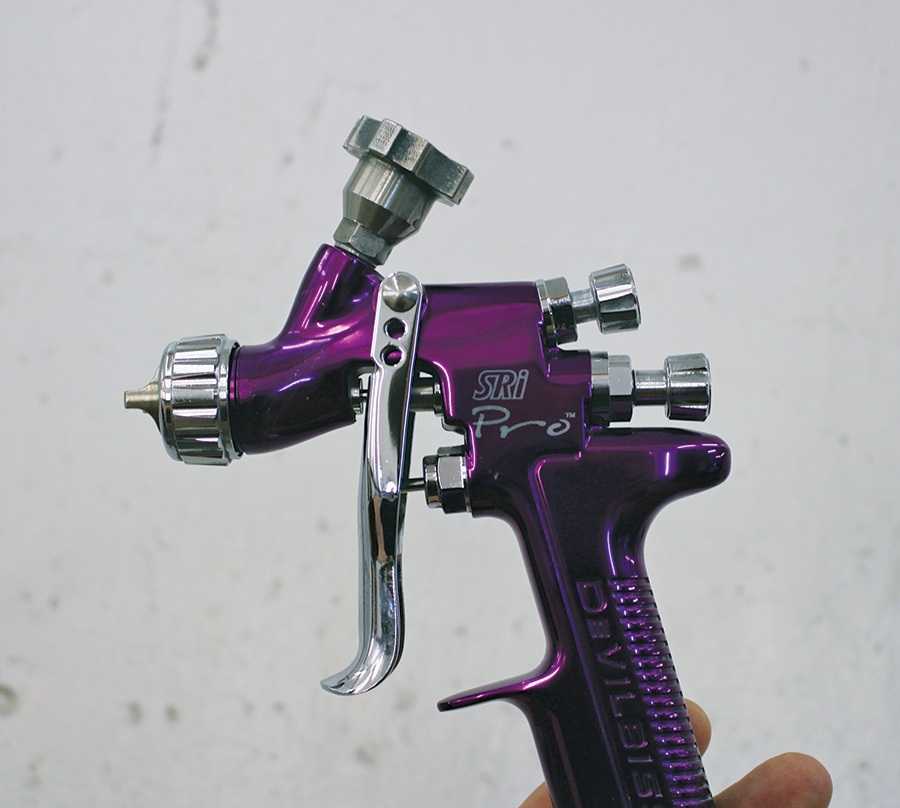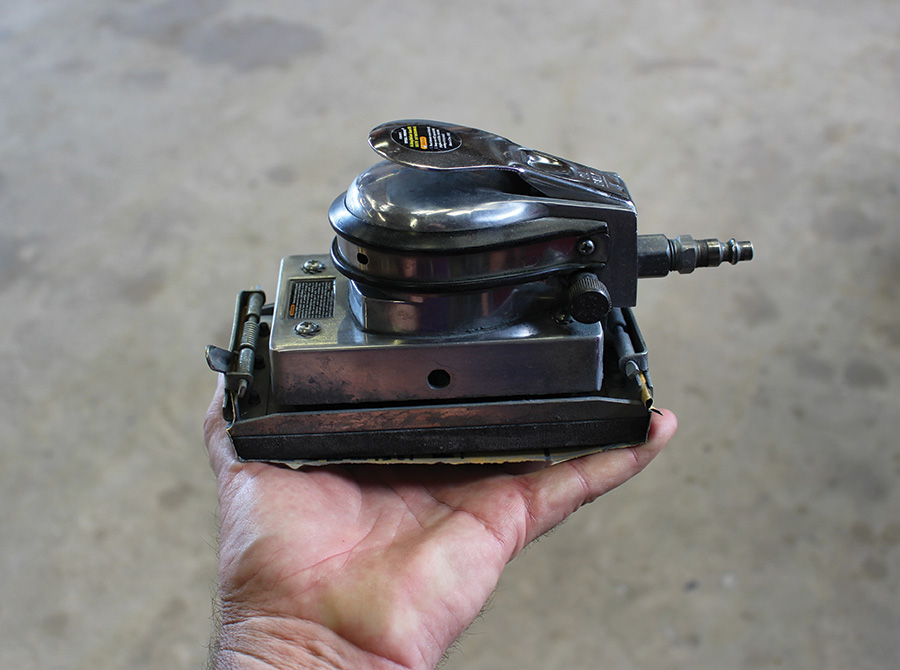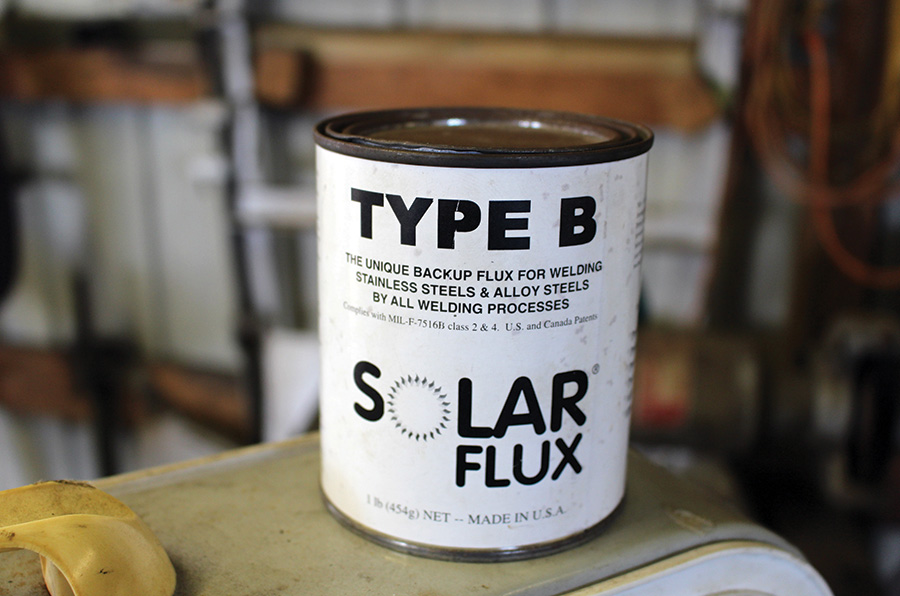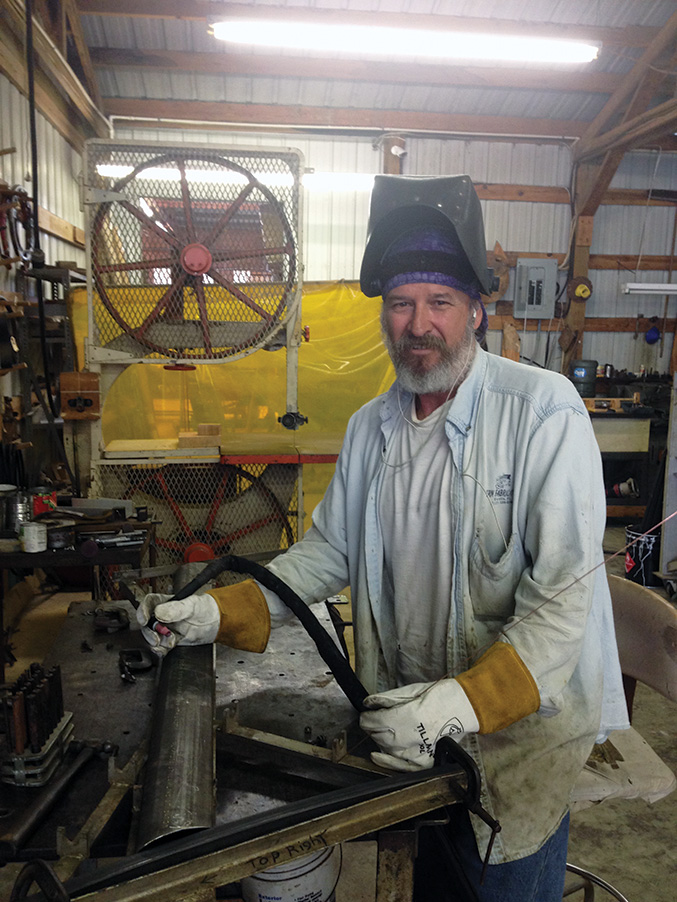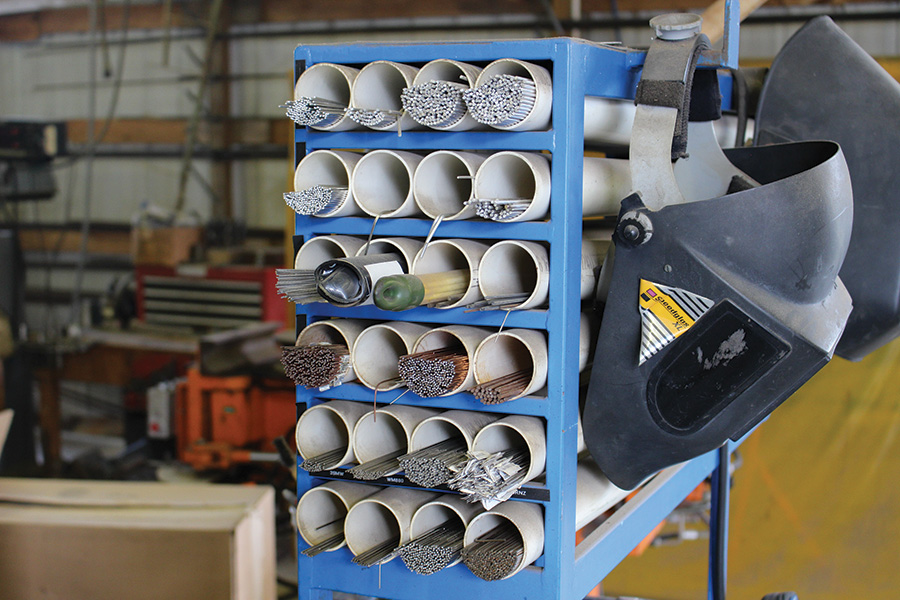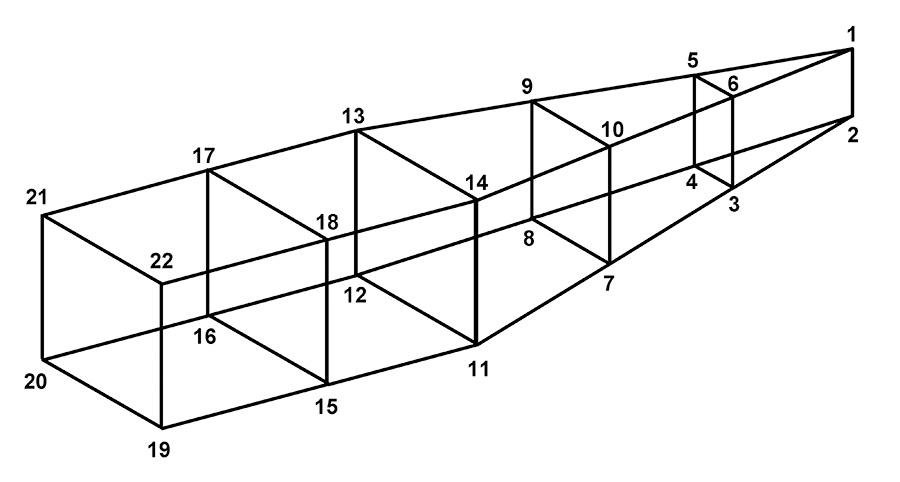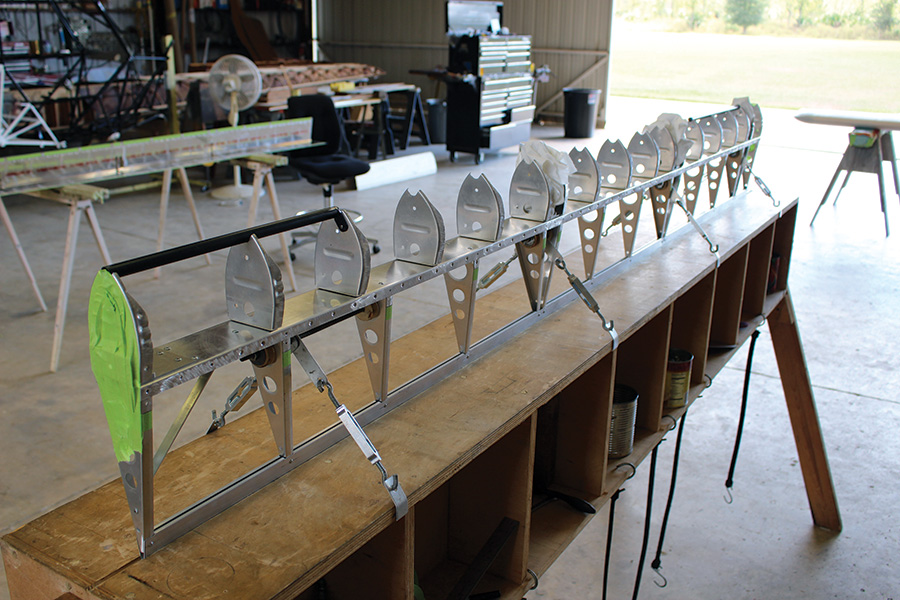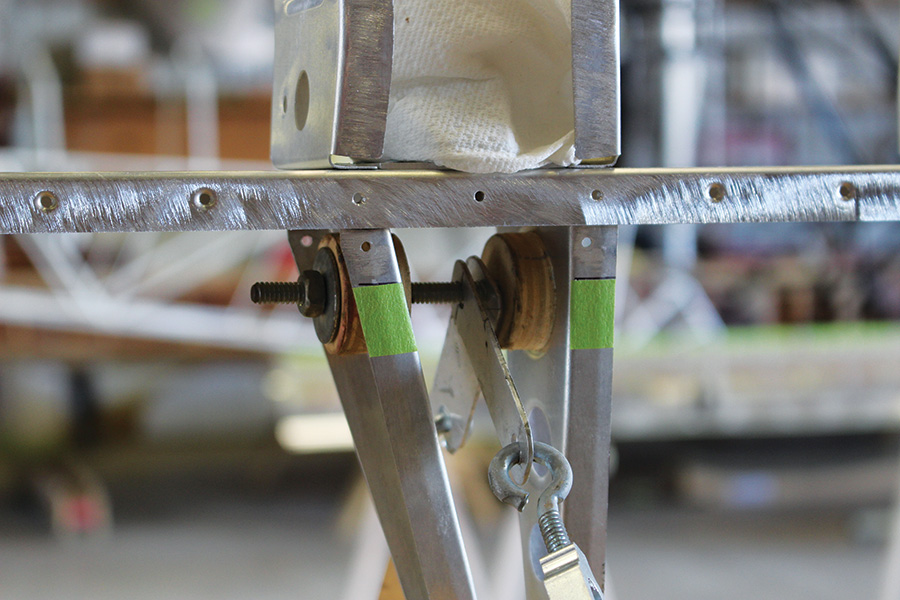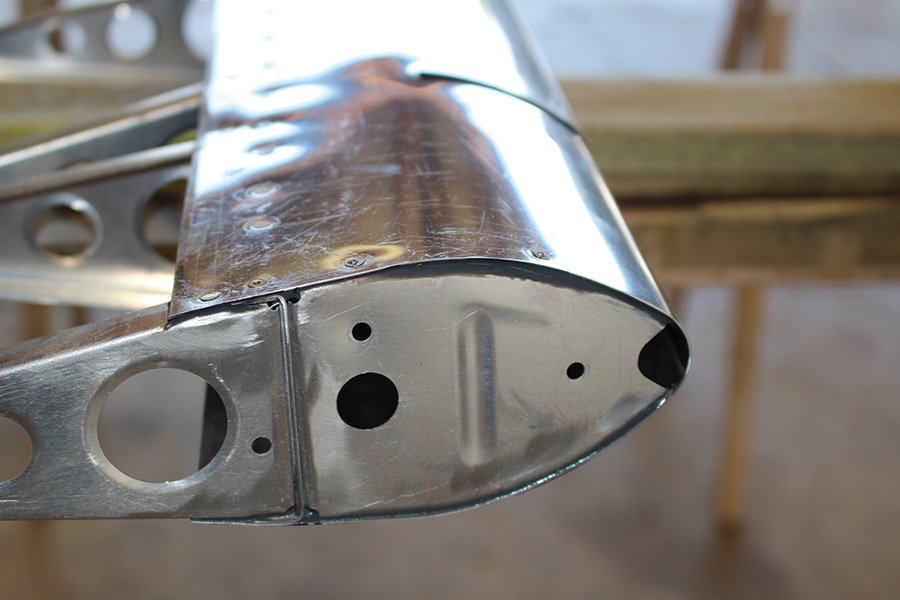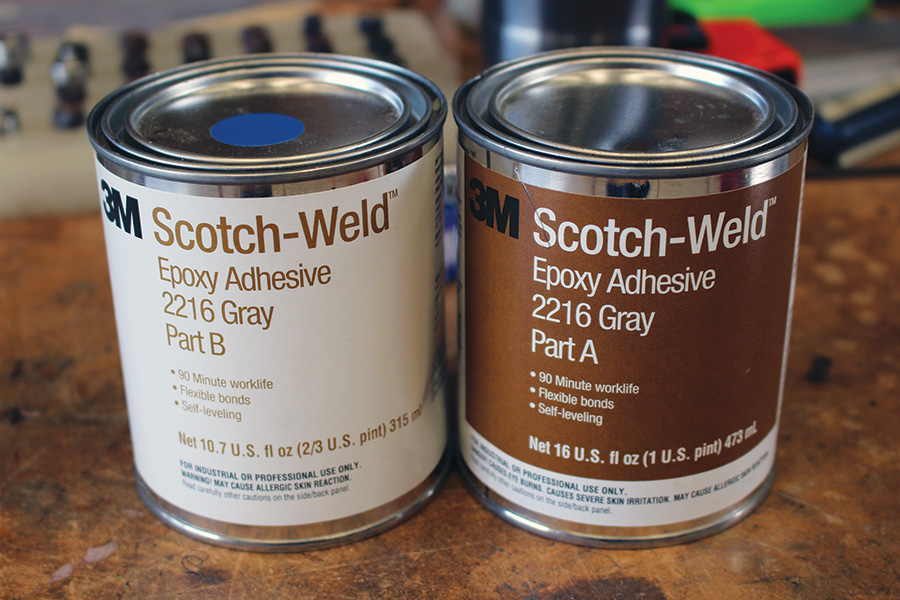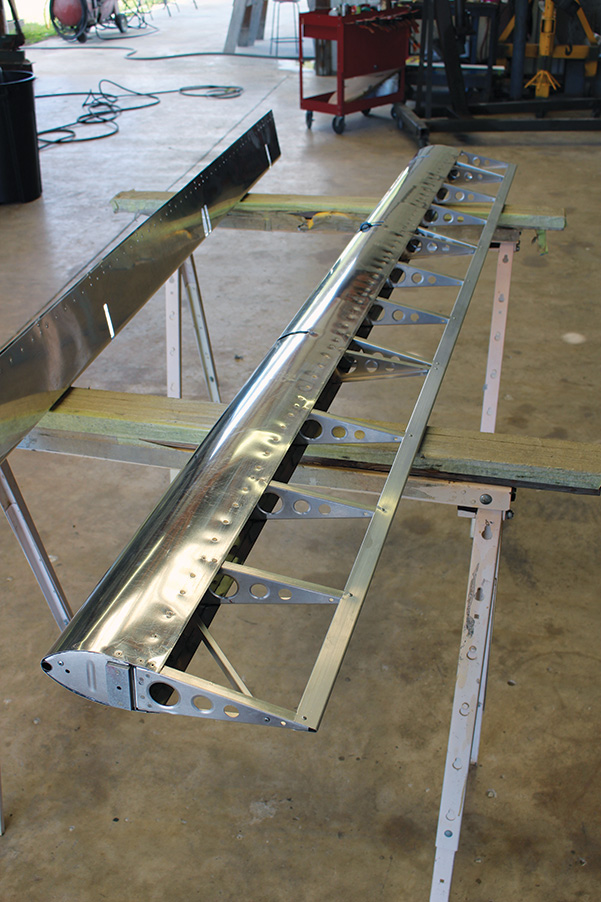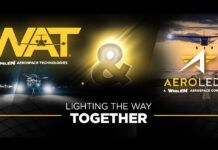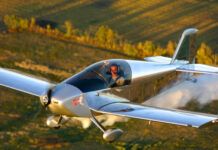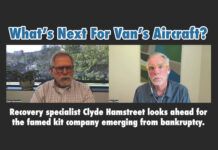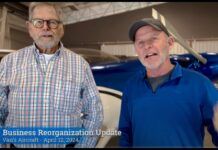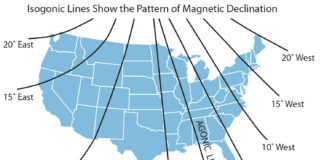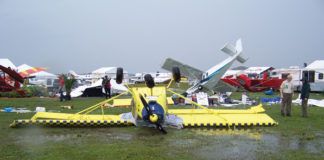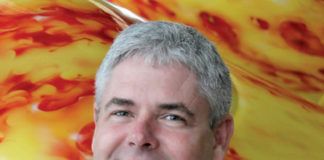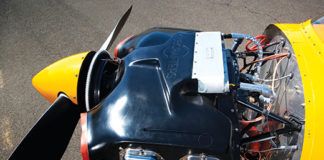Have you ever been deeply immersed in a shop task and mumbled to yourself, “There must be a better way”? You’re not alone. The truth is that aircraft fabrication professionals have the same thought almost every day. In this series we’ll take KITPLANES® readers into a variety of professional settings, looking for ideas, methods, products, and concepts transferable to the home shop. You’re going to meet some very clever people. Some of their solutions are complex, but others are so forehead-slapping simple that you’ll wonder why you didn’t already think of it. Enjoy!
This month we’re visiting Jim Kimball Enterprises, in sunny Zellwood, Florida. The Kimball family and staff have been cranking out award-winning restorations, one-off customs, and multiple variations of the famous Pitts Model 12 for more than 30 years. There is much for the homebuilder to learn from a shop like this.
Let’s start in the paint and cover shop. Our pro is Clint Sweet, the man responsible for shooting the fabulous paint seen on recent Kimball creations.
Clint is not your average painter, having received formal art training at the college level (he earned a B.A. in illustration), then gaining a reputation for his airbrush work in the custom motorcycle industry. Years ago Kevin Kimball contracted with him to airbrush an elaborate “snake scale” scheme on a client’s custom Pitts, and he came onboard full time a few months later. Clint still does some personal airbrush projects for fun, including radio control aircraft, motorcycles, and the most recent livery on the Reno racer Precious Metal. He also enjoys traditional art projects like sculpture.
Kimball Enterprises needs a painter with Clint’s wide range of skills. With the exception of kit component production, all projects are custom, one-off creations. Some clients arrive with a very specific idea of what they want their airplane to look like, perhaps a favorite theme, or a particular WW-II layout. Others desire design services, which brings us to our first pro tip: real professionals know when someone else can do it better. Most Kimball clients are referred to Mirco Picorari of Aircraft Design Studio, in Modena, Italy. If you attend the Oshkosh and Lakeland fly-ins, chances are you’ve seen Mirco’s work on airshow aircraft, the jets in FBO parking, and even color picks in the Vintage area.
A typical Picorari design for a Model 12 might include multiple base colors, color fading, stripes, checkerboard, and lettering or logos with airbrushed details. The paints selected could be solids, metallics, or pearls, often in the same scheme. The actual execution falls to Clint, no matter how complex. He starts by shooting a small sample panel for each color and feature. Those panels go to the client for approval, but the process of creating them allows everyone to understand application and color details that might otherwise not be realized until later. That’s a very good lesson. Far too many homebuilders get their first experience with a spray gun by shooting new airplane parts. They expect great results, and they are often disappointed. Contrast that approach with Clint’s method. Here’s a guy with huge experience, yet he takes the time to understand exactly how the paint will go on before he ever points a gun at a flight article.
Secrets of Fabric Finishing
Most Kimball fabric work is done using the Poly-Fiber process. Kevin considers it a reliable base, an important point when you think about the time, effort, and money invested in a typical client’s custom paint. The actual fabric application, with a few exceptions, is conventional. After filling the fabric weave, a typical finish starts with four cross coats of Poly-Brush followed by four cross coats of silver Poly-Spray. The component is allowed to cure a few days, protective masking tape is placed over all protrusions and rib stitches, and then it’s time to sand.
Traditionally, fabric work is hand-sanded, but in the Kimball shop the majority is done using a pneumatic palm sander with a foam rubber foot. All sanding is done wet, using 220 grit. The jitterbug works fine across the open panels and along the pinked tape edges, after which the masking tape is peeled and fine details are worked by hand. The process removes all the fabric nits, fuzzy pinked tape edges, and any airborne dirt that may have crept into the paint process. The panel is washed to remove sanding debris, and when fully dry, it gets two more cross coats of silver. A light scuff with 400 grit on a soft block follows cure, then it’s time for color.
Topcoats vary depending on aircraft type. The restoration of a certified production aircraft requires a restorer to follow the covering system STC in detail. In the case of Poly-Fiber, the STC requires using Poly-Tone or Aerothane color coats. There is no such requirement for an aircraft licensed in an Experimental category, and for those the Kimball preference is for PPG products. A typical application uses a basecoat and clearcoat from the Deltron line, usually DBC base and DCU2021 clear with a flex additive.
In a typical automotive application, Deltron DBC color base is catalyzed by the hardener in the DCU clear, which must be sprayed over the DBC within a tight time window. However, the DBC itself may be catalyzed, and Clint says he routinely does so. Kevin and Clint feel they get a tougher finish, but it also relaxes the clearcoat time constraint, and eliminates concern about total thickness. Both considerations are important, as the typical scheme includes multiple colors and takes time to tape, mask, and spray.
With all the colors in place, the next step is usually three coats of clear. If the scheme includes airbrushed detail, the cured clear will be wet-sanded, then airbrushed, then covered with two more clear coats. Although the finished clear on metal components can be cut and buffed, Clint avoids running a typical 1900 RPM buffer on fabric, as the frictional heating under the spinning pad can do funny things to heat-shrunk polyester.
The spray guns in the Kimball shop are not wildly expensive. The two hanging in the booth on the day of my visit were a DeVilbiss GFG670 Plus, and a DeVilbiss SRi Pro for detail work. Clint uses a cup liner system, as it allows him to spray at any angle, including upside down. Cheap guns are used for primer work, per conventional practice.
There’s nothing fancy about the Kimball spray booth. It’s a walled off corner of the big hangar, with inlet filters and one large exit fan. The booth is carefully cleaned before spray sessions, and all surfaces are wetted. Aluminum rails are suspended from the ceiling beams, under which small parts or whole wings can be hung at a convenient height. Wings are hung with the chord line vertical, and with the least-seen side facing the booth air inlet, both tricks to minimize the chance of noticeable dirt or nibs in the paint. A compressed air filtration system provides spray gun air and breathing air for a mask.
I asked Clint what he considered the best advice for great paint. He said simply, “Take your time.”
The Welding shop
Jeff Woodham is an artist with a TIG torch. Jeff has been with the Kimballs more than a decade, welding Model 12 kit components, exhaust systems, fuel tanks, and anything else you can imagine. TIG welding is used almost exclusively, as it produces excellent joint quality in a wide variety of materials.
Stainless steel exhaust systems for the M14 radials are 312 alloy, joined with 308 filler rod. When welding stainless, it is necessary to shield the back side of a weld from the atmosphere. Failure to do so results in what welders refer to as “sugar,” an extremely grainy, rough, and weak weld surface. There are two ways to provide shielding, back gas purge or a protective flux. A back gas purge means piping argon into the tube assembly in order to exclude the atmosphere. The alternate method simply requires spreading a layer of flux on the inside of each joint before welding. Jeff likes Solar Flux. He mixes it with any fast evaporating solvent to make a paste, then paints the paste inside the end of each tube before positioning for the weld. The result is a clean, sugar-free joint, without the setup time or cost of argon gas.
Aluminum skins and tanks are mostly 3003 alloy, for which Jeff uses a soft 1100 filler rod. Although 1100 is low-strength, it is very ductile. The soft rod allows skin seams (in welded wheelpants, for example) to be hammered and re-formed as desired. Structural aluminum parts are usually 6061 and get a 4043 rod.
In the Kimball shop (and many others), the standard filler rod for 4130 steel tube is ER80S-D2. The exception is a 4130 component that will be oven heat-treated to some engineering-specified high strength level after assembly. It is very rare to find such parts in sport airplanes; stick with the ER80S-D2 and you’ll be fine.
Special lightweight Model 12s get titanium components, and Jeff welds those too. With so many different kinds of filler rods in the shop, it becomes important to keep them organized. In the Kimball shop the rod rack is mounted right on top of the welding machine. You might want to build one as a practice project.
The shop workhorse is a Miller Syncrowave 250 machine with a water-cooled torch. Jeff and Kevin like Miller machines.
Want to weld a fuselage frame without warpage? Try the rotational method. After tacking, start at the tailpost, weld all the clusters, then move forward one station. Weld a complete cluster, then move to the next cluster at that station in a clockwise or counterclockwise pattern (it doesn’t matter which; just pick a direction and stick with it). Work completely around the station, finishing each cluster in turn, before moving forward one station and starting the process again. It’s almost a faith-based task. Partway through the process the fuselage will look warped, but don’t worry; when you finish the last cluster at the firewall it will be straight again.
The Aileron Jig
Roll rate is a big deal in the aerobatic world. Eye-popping rotation requires an aileron with a length nearly the full span of a wing panel. So how do you build a very light, very long, perfectly straight all-metal aileron?
Initial assembly is dirt simple. The nose ribs and main ribs are riveted to the spar, then the trailing edge is attached. Next, the hinge hardware and counterweight assemblies are fastened into place.
At this point the aileron is still quite flexible in torsion. It is the leading edge D-cell which stiffens the aileron and locks out twist. Adding the leading edge wrap is the critical step.
In the Kimball shop it is done with the assembly standing vertical in a special fixture. The basic table structure is a stiff glued-and-screwed box. A groove just wide enough to cradle the trailing edge material runs down the centerline of the top surface.
A series of hardware store turnbuckles, some strap, a bit of rod, and a few wood plugs secure the aileron to the table. The turnbuckles are carefully adjusted until the assembly is perfectly straight.
The leading edge skin is held tightly in place with bungees, and the rivet holes are drilled, de-burred, and dimpled. Note there are no holes in the interior nose ribs; rivets are not required in those locations. That’s because the skin is bonded as well as riveted, using 3M Scotch-Weld 2216 structural adhesive.
To promote adhesion, the nose rib and spar flanges are roughed up with a coarse grit wheel, as are the matching areas on the inside of the skin. The adhesive is mixed, and a bead is spread on all the flanges. The skin wrap is placed, pressed into the adhesive, and Clecoed. Solid rivets are squeezed along the spar line, and blind rivets are pulled in the end nose ribs and a few awkward locations. Squeezed out adhesive is wiped away before cure.
The result is light, strong, and stiff, suitable for even the baddest biplane.
See you next month!

